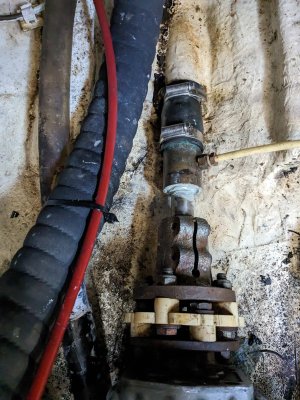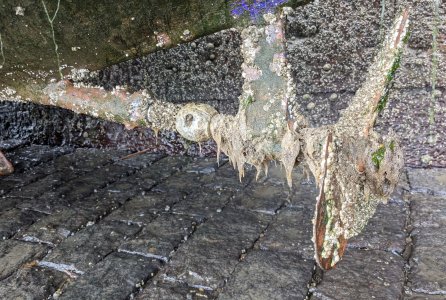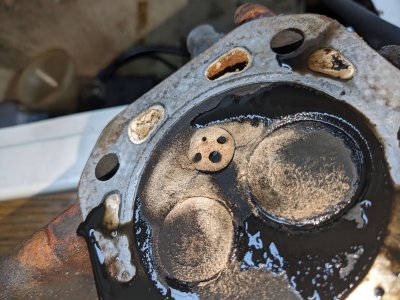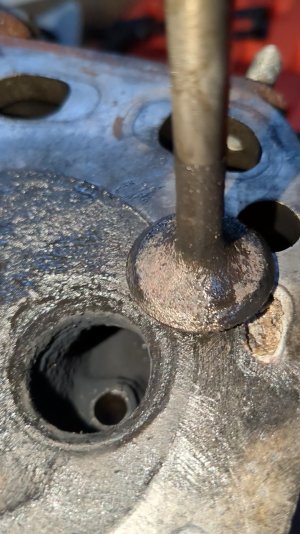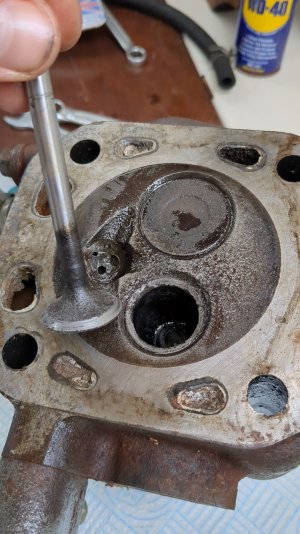ApexTheGunn
New member
I'm pretty new to diesel engines and have only had my small leisure 23 a year, so looking for some input from more experienced boat owners.
Earlier in the season I had starting issues, and suspected a range of fuel supply issues that might be causing it, from old rusty tank to old filters and leaking bleed screws. I have now replaced tank, all hoses, the whole fuel filter assembly, checked all bolts and jubilee clips and bled and rebled the engine. I seem to get decent flow out the bleed points with the manual lift pump.
The engine starts well after 20 seconds or so of cranking now, and runs fine in neutral up to high revs, exhaust looking clear and no discernible leaks or weird sounds. However, as soon as I engage reverse or forward gears the prop will spin slowly but the engine will start slowing until it eventually dies.
If I keep engaging reverse gear after maybe 5 mins of engaging and disengaging, barely keeping the engine running, eventually the prop will spin up and I'll be able to rev and create propulsion in reverse. However forward will still stall the engine (different gearing ratio?). After another 5 mins of engaging forward (and helps with forward momentum of the boat) forward will run fine as well. If the boat sits for a few hours it'll be back to scratch for the whole process.
Turning the prop shaft by hand there is noticeable resistance, but I can just about turn it by hand using full force from inside the engine room (holding on the the prop shaft itself). Testing this on other boats there is significantly less resistance.
I know the 1gm10 torque is around 16Nm, but have no practical experience of how strong this engine should be, and how much resistance is too much, and haven't measured the resistance in the prop shaft yet.
As I've also read about many gm10s with similar symptoms in gear being due to fuel supply, or a worn lift pump I'm considering bypassing or replacing the pump as well, but also have no frame of reference for how much fuel flow is normal.
If it is the prop shaft resistance I have no idea how to resolve it, is that a big job of replacing cutlass bearings or whole prop shaft?
Has anyone come across this before and have insight into if either of these two things are reasonable causes of these issues?
Earlier in the season I had starting issues, and suspected a range of fuel supply issues that might be causing it, from old rusty tank to old filters and leaking bleed screws. I have now replaced tank, all hoses, the whole fuel filter assembly, checked all bolts and jubilee clips and bled and rebled the engine. I seem to get decent flow out the bleed points with the manual lift pump.
The engine starts well after 20 seconds or so of cranking now, and runs fine in neutral up to high revs, exhaust looking clear and no discernible leaks or weird sounds. However, as soon as I engage reverse or forward gears the prop will spin slowly but the engine will start slowing until it eventually dies.
If I keep engaging reverse gear after maybe 5 mins of engaging and disengaging, barely keeping the engine running, eventually the prop will spin up and I'll be able to rev and create propulsion in reverse. However forward will still stall the engine (different gearing ratio?). After another 5 mins of engaging forward (and helps with forward momentum of the boat) forward will run fine as well. If the boat sits for a few hours it'll be back to scratch for the whole process.
Turning the prop shaft by hand there is noticeable resistance, but I can just about turn it by hand using full force from inside the engine room (holding on the the prop shaft itself). Testing this on other boats there is significantly less resistance.
I know the 1gm10 torque is around 16Nm, but have no practical experience of how strong this engine should be, and how much resistance is too much, and haven't measured the resistance in the prop shaft yet.
As I've also read about many gm10s with similar symptoms in gear being due to fuel supply, or a worn lift pump I'm considering bypassing or replacing the pump as well, but also have no frame of reference for how much fuel flow is normal.
If it is the prop shaft resistance I have no idea how to resolve it, is that a big job of replacing cutlass bearings or whole prop shaft?
Has anyone come across this before and have insight into if either of these two things are reasonable causes of these issues?

